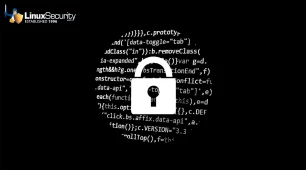-----BEGIN PGP SIGNED MESSAGE-----
Hash: SHA1
______________________________________________________________________________
SUSE Security Announcement
Package: AppArmor
Announcement ID: SUSE-SA:2007:015
Date: Thu, 15 Feb 2007 10:00:00 +0000
Affected Products: SUSE LINUX 10.0
SUSE SLES 9
Novell Linux Desktop 9
Open Enterprise Server
Novell Linux POS 9
Vulnerability Type: AppArmor language additions
Severity (1-10): 2
SUSE Default Package: yes
Cross-References:
Content of This Advisory:
1) Security Vulnerability Resolved:
AppArmor language additions to avoid security related pitfalls
Problem Description
2) Solution or Work-Around
3) Special Instructions and Notes
4) Package Location and Checksums
5) Pending Vulnerabilities, Solutions, and Work-Arounds:
See SUSE Security Summary Report.
6) Authenticity Verification and Additional Information
______________________________________________________________________________
1) Problem Description and Brief Discussion
Two new language features have been added to improve the
confinement provided to applications executing other applications will
confined by AppArmor.
- Two new execute modifiers: 'P' and 'U' are provided and are flavors of the existing 'p' and 'u' modifiers but indicate that the
environment should be stripped across the execute transition.
Using "Ux" and "Px" avoids injecting code using LD_PRELOAD and
similar variables into the started executables by a infected
profiled program.
The environment variable filtering is the same as used for setuid
applications.
- A new permission 'm' is required when an application executes
mmap(2) with protection PROT_EXEC.
This avoids infected binaries escalating the "r" privilege to a
file into a "rx" privilege.
Note that both issues are not directly security fixes, they instead
avoid common problems during profile creation.
These changes also require a new kernel, which we released in December
2006, tracked by our advisory SUSE-SA:2006:079.
Only SUSE Linux Enterprise Server 9 (and related products) and SUSE
Linux 10.0 are affected by this change. SUSE Linux 10.1, SUSE Linux
Enterprise 10 and newer products already contain the new profile
syntax and behavior.
2) Solution or Work-Around
There is no known workaround, please install the update packages.
3) Special Instructions and Notes
Please verify your profiles still work after installation.
Pay close attention to custom developed profiles and locally modified
Novell supplied profiles - which may require additional privileges
when used on a system supporting these new language features.
Please check your existing profiles if "ux" and "px" can be replaced
by the safer "Ux" and "Px" inheritance modifiers.
In general, try to avoid the unconfined modifiers ("ux" and "Ux")
if possible when writing profiles.
4) Package Location and Checksums
The preferred method for installing security updates is to use the YaST
Online Update (YOU) tool. YOU detects which updates are required and
automatically performs the necessary steps to verify and install them.
Alternatively, download the update packages for your distribution manually
and verify their integrity by the methods listed in Section 6 of this
announcement. Then install the packages using the command
rpm -Fhv
to apply the update, replacing with the filename of the
downloaded RPM package.
x86 Platform:
SUSE LINUX 10.0:
936fed12b33b8621caab56733c7b1393
c84f2b888bbe77a934196ba2e04b4ed6
Platform Independent:
SUSE LINUX 10.0:
b4de70184a97aa091f5856ecb2e3e347
49cabaf9ca52a9fb353d6f4a7a994643
f914bd72cec24ffe5236e9f8d60bc6ca
x86-64 Platform:
SUSE LINUX 10.0:
8cb73b545b92e0b472214ae3c3e64fa8
165acf23c827c810e2338c71e8cf6449
Sources:
SUSE LINUX 10.0:
7e728d2c935286b5633054f2c6fdda65
626b105772b193af7b88531ff903871f
2352ccba90fb77b964cd39d82155033e
Our maintenance customers are notified individually. The packages are
offered for installation from the maintenance web:
Open Enterprise Server
Novell Linux POS 9
Novell Linux Desktop 9
SUSE SLES 9
http://support.novell.com/techcenter/psdb/8107eb1c77a60d367936528fd6414aa1.html
______________________________________________________________________________
5) Pending Vulnerabilities, Solutions, and Work-Arounds:
See SUSE Security Summary Report.
______________________________________________________________________________
6) Authenticity Verification and Additional Information
- Announcement authenticity verification:
SUSE security announcements are published via mailing lists and on Web
sites. The authenticity and integrity of a SUSE security announcement is
guaranteed by a cryptographic signature in each announcement. All SUSE
security announcements are published with a valid signature.
To verify the signature of the announcement, save it as text into a file
and run the command
gpg --verify
replacing with the name of the file where you saved the
announcement. The output for a valid signature looks like:
gpg: Signature made using RSA key ID 3D25D3D9
gpg: Good signature from "SuSE Security Team "
where is replaced by the date the document was signed.
If the security team's key is not contained in your key ring, you can
import it from the first installation CD. To import the key, use the
command
gpg --import gpg-pubkey-3d25d3d9-36e12d04.asc
- Package authenticity verification:
SUSE update packages are available on many mirror FTP servers all over the
world. While this service is considered valuable and important to the free
and open source software community, the authenticity and the integrity of
a package needs to be verified to ensure that it has not been tampered
with.
There are two verification methods that can be used independently from
each other to prove the authenticity of a downloaded file or RPM package:
1) Using the internal gpg signatures of the rpm package
2) MD5 checksums as provided in this announcement
1) The internal rpm package signatures provide an easy way to verify the
authenticity of an RPM package. Use the command
rpm -v --checksig
to verify the signature of the package, replacing with the
filename of the RPM package downloaded. The package is unmodified if it
contains a valid signature from build@suse.de with the key ID 9C800ACA.
This key is automatically imported into the RPM database (on
RPMv4-based distributions) and the gpg key ring of 'root' during
installation. You can also find it on the first installation CD and at
the end of this announcement.
2) If you need an alternative means of verification, use the md5sum
command to verify the authenticity of the packages. Execute the command
md5sum
after you downloaded the file from a SUSE FTP server or its mirrors.
Then compare the resulting md5sum with the one that is listed in the
SUSE security announcement. Because the announcement containing the
checksums is cryptographically signed (by security@suse.de), the
checksums show proof of the authenticity of the package if the
signature of the announcement is valid. Note that the md5 sums
published in the SUSE Security Announcements are valid for the
respective packages only. Newer versions of these packages cannot be
verified.
- SUSE runs two security mailing lists to which any interested party may
subscribe:
opensuse-security@opensuse.org
- General Linux and SUSE security discussion.
All SUSE security announcements are sent to this list.
To subscribe, send an e-mail to
.
suse-security-announce@suse.com
- SUSE's announce-only mailing list.
Only SUSE's security announcements are sent to this list.
To subscribe, send an e-mail to
.
==================================================================== SUSE's security contact is or .
The public key is listed below.
====================================================================





















